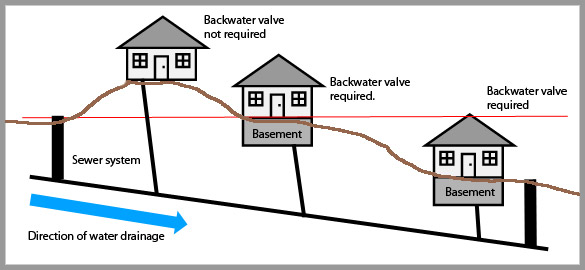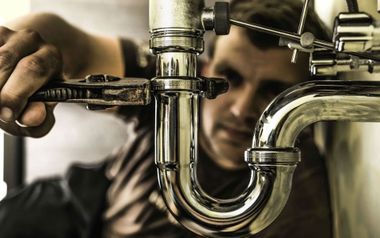Breaking Down The Anatomy of Your Property's Plumbing System
Breaking Down The Anatomy of Your Property's Plumbing System
Blog Article
This post following next relating to The Inner Workings of Your Home's Plumbing is extremely stimulating. Give it a try and draw your own final thoughts.

Comprehending just how your home's plumbing system works is vital for every single homeowner. From providing tidy water for drinking, cooking, and showering to securely removing wastewater, a well-kept pipes system is important for your family members's health and comfort. In this thorough overview, we'll explore the complex network that makes up your home's plumbing and deal tips on maintenance, upgrades, and managing usual issues.
Introduction
Your home's plumbing system is more than just a network of pipelines; it's an intricate system that guarantees you have accessibility to clean water and efficient wastewater removal. Recognizing its components and exactly how they collaborate can aid you prevent costly repair work and guarantee everything runs efficiently.
Standard Parts of a Pipes System
Pipes and Tubes
At the heart of your pipes system are the pipes and tubing that bring water throughout your home. These can be made of various materials such as copper, PVC, or PEX, each with its advantages in terms of toughness and cost-effectiveness.
Components: Sinks, Toilets, Showers, etc.
Fixtures like sinks, toilets, showers, and bathtubs are where water is utilized in your home. Understanding exactly how these fixtures connect to the pipes system aids in detecting issues and planning upgrades.
Valves and Shut-off Points
Shutoffs regulate the flow of water in your plumbing system. Shut-off shutoffs are critical throughout emergency situations or when you need to make repair work, allowing you to isolate parts of the system without disrupting water circulation to the entire house.
Water Supply System
Main Water Line
The primary water line links your home to the local supply of water or a private well. It's where water enters your home and is dispersed to different fixtures.
Water Meter and Pressure Regulator
The water meter actions your water use, while a stress regulator makes certain that water flows at a safe stress throughout your home's plumbing system, preventing damage to pipelines and components.
Cold Water vs. Hot Water Lines
Understanding the difference in between cold water lines, which supply water straight from the primary, and hot water lines, which carry heated water from the hot water heater, aids in fixing and preparing for upgrades.
Drain System
Drain Pipeline and Traps
Drain pipelines bring wastewater away from sinks, showers, and bathrooms to the sewer or sewage-disposal tank. Catches avoid sewer gases from entering your home and also catch particles that could create obstructions.
Air flow Pipelines
Air flow pipelines allow air right into the drain system, protecting against suction that could slow drainage and trigger traps to vacant. Proper air flow is important for preserving the stability of your plumbing system.
Relevance of Appropriate Drain
Making certain correct water drainage stops backups and water damages. On a regular basis cleaning drains pipes and preserving catches can avoid pricey repairs and prolong the life of your pipes system.
Water Heating Unit
Kinds Of Water Heaters
Hot water heater can be tankless or typical tank-style. Tankless heating units heat water as needed, while storage tanks save heated water for immediate usage.
Upgrading Your Pipes System
Reasons for Upgrading
Updating to water-efficient fixtures or replacing old pipelines can enhance water top quality, decrease water bills, and increase the value of your home.
Modern Pipes Technologies and Their Benefits
Discover technologies like clever leak detectors, water-saving commodes, and energy-efficient water heaters that can conserve money and minimize ecological effect.
Cost Considerations and ROI
Determine the ahead of time costs versus long-lasting financial savings when considering plumbing upgrades. Lots of upgrades spend for themselves with reduced energy costs and fewer repairs.
Exactly How Water Heaters Connect to the Plumbing System
Recognizing how hot water heater connect to both the cold water supply and warm water distribution lines aids in detecting concerns like inadequate warm water or leaks.
Maintenance Tips for Water Heaters
Consistently flushing your hot water heater to get rid of sediment, checking the temperature setups, and inspecting for leakages can extend its lifespan and enhance power performance.
Usual Plumbing Concerns
Leaks and Their Reasons
Leakages can take place because of aging pipes, loosened fittings, or high water stress. Resolving leaks quickly stops water damage and mold growth.
Blockages and Clogs
Obstructions in drains and bathrooms are often triggered by purging non-flushable things or a build-up of grease and hair. Using drainpipe displays and bearing in mind what goes down your drains can protect against obstructions.
Indicators of Pipes Troubles to Look For
Low water stress, sluggish drains pipes, foul odors, or abnormally high water costs are indicators of possible plumbing problems that ought to be addressed quickly.
Pipes Maintenance Tips
Regular Evaluations and Checks
Arrange yearly pipes examinations to capture concerns early. Seek indications of leakages, deterioration, or mineral buildup in faucets and showerheads.
Do It Yourself Upkeep Tasks
Basic tasks like cleaning faucet aerators, checking for bathroom leakages utilizing color tablet computers, or protecting subjected pipelines in cold climates can avoid major plumbing issues.
When to Call a Specialist Plumbing
Know when a plumbing concern calls for specialist proficiency. Trying intricate fixings without correct expertise can cause even more damages and greater fixing prices.
Tips for Minimizing Water Usage
Simple practices like dealing with leakages quickly, taking much shorter showers, and running complete loads of washing and meals can conserve water and lower your utility costs.
Eco-Friendly Plumbing Options
Consider sustainable pipes products like bamboo for flooring, which is durable and green, or recycled glass for countertops.
Emergency situation Preparedness
Actions to Take During a Pipes Emergency situation
Know where your shut-off shutoffs are located and exactly how to switch off the water system in case of a ruptured pipe or major leakage.
Value of Having Emergency Calls Useful
Maintain get in touch with information for regional plumbings or emergency situation services conveniently available for fast reaction throughout a plumbing crisis.
Ecological Impact and Preservation
Water-Saving Components and Devices
Setting up low-flow taps, showerheads, and toilets can considerably lower water usage without giving up efficiency.
DIY Emergency Fixes (When Relevant).
Short-term repairs like using duct tape to patch a leaking pipe or putting a container under a trickling faucet can reduce damage up until a specialist plumber shows up.
Verdict.
Recognizing the makeup of your home's plumbing system empowers you to preserve it successfully, conserving time and money on fixings. By adhering to routine upkeep routines and staying informed regarding modern plumbing modern technologies, you can guarantee your pipes system runs efficiently for years to find.
HOW YOUR PLUMBING SYSTEM WORKS
Which Pipes Do What?
Blue lines = fresh water supply entering the building Red lines = hot water supply entering the building Grey lines = pipes carrying waste away from the building and venting pipes carrying gases away from the building (through the roof) YOUR MAIN PLUMBING SYSTEMS
There are two main plumbing systems that support your home s basic plumbing needs one that brings clean water into your home, and one that sends dirty water away from your home. Connected to the toilet, bath, shower, and other faucets in your home, these two systems keep your water flowing in the right directions.
ACCESSING FRESH WATER
Fresh and clean water is brought into your home through the main water supply line . Filtered through one pipe, this water is pressured to flow into the various fixtures in your home at any given time.
This water can be sourced from a well located on your property, a pond or river (mostly cottages), or, as in most cases, from the city s municipal water treatment centre. However, it is important to note that water that is untreated, such as the water siphoned from ponds or rivers, may not be safe to drink. Personal water supplies always need to be treated for hardness and contaminants before consumed.
MUNICIPAL WATER SUPPLIES
Improve taste and odour Remove sediment Eliminate hardness Reduce chlorine COLD WATER SUPPLY VS. HOT WATER SUPPLY
Cold water flows into your home or building through the service line, which then distributes hot or cold water to your fixtures. This line is most commonly run through a central column that runs floor to floor. Hot water runs in short and straight pipes as the longer the pipeline, the more heat that will be lost in the transfer. Having shorter pipes also allows residents to access hot water more quickly.
WASTE WATER SYSTEM
Your wastewater system is divided into two parts pipes that send wastewater away from your home and venting pipes that send sewer gas away from your home. Sewage water travels through pipes that flush the water and waste towards local sewers that are operated and managed by your city or town. Most sewer systems rely on gravity to move the wastewater to where it needs to go.
The further away from your toilet or sink, the larger wastewater pipes become. This allows for waste to be disposed of from various parts of your home or business at once without pipe blockages. The angle and flow of these pipes are also essential for keeping your waste pipes clear of build up.
https://harrisplumbing.ca/how-your-home-plumbing-system-works/

Do you like more info about ? Leave a remark further down. We would be pleased to find out your suggestions about this review. We hope that you come back again soon. Sharing is good. You won't know, you could be doing someone a favor. Many thanks for going through it.
Call Report this page